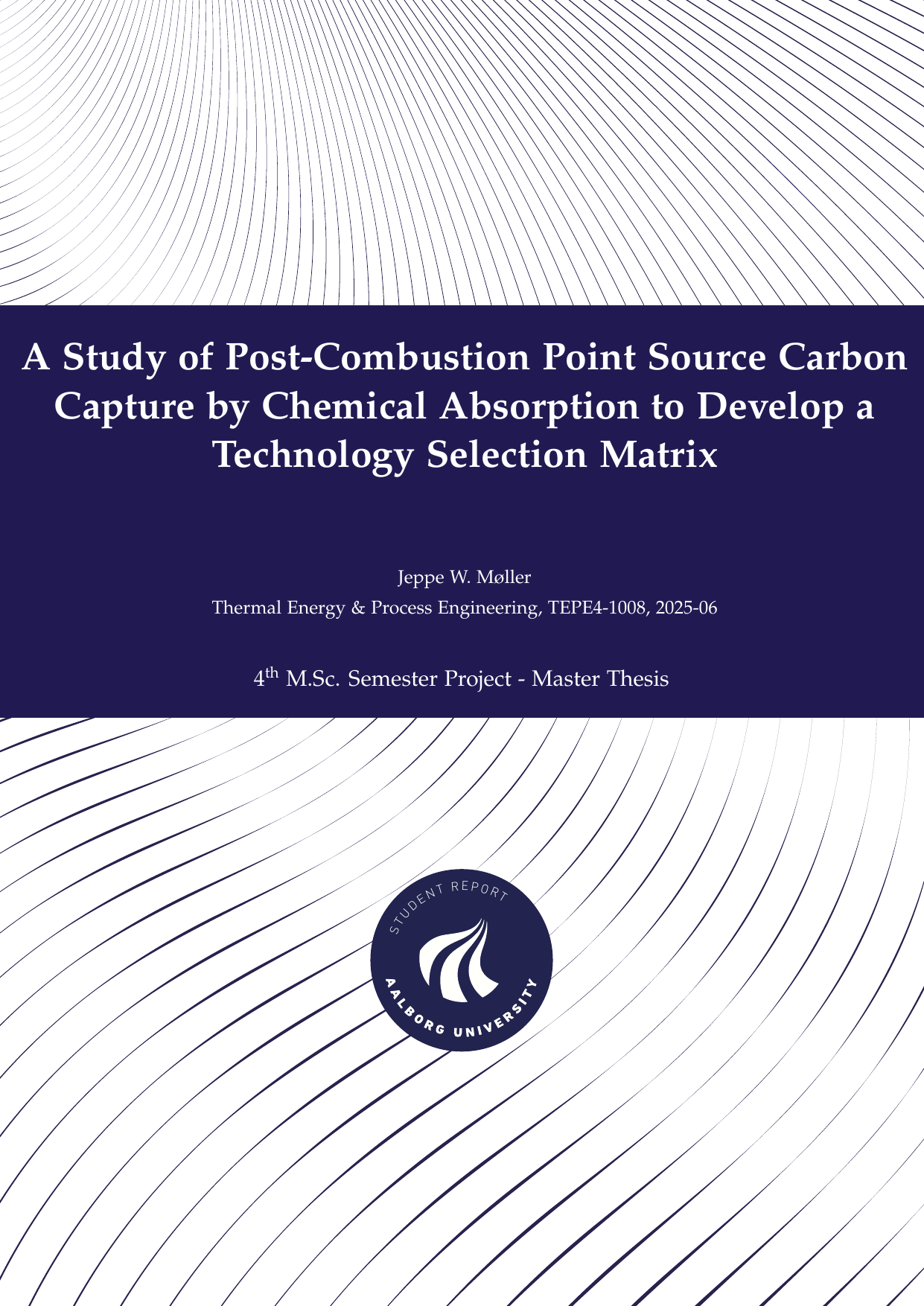
A Study of Post-Combustion Point Source Carbon Capture by Chemical Absorption to Develop a Technology Selection Matrix
Author
Term
4. term
Education
Publication year
2025
Submitted on
2025-05-27
Pages
69
Abstract
This thesis presents a comparative study of three mature chemisorption-based Carbon Capture (CC) technologies: Monoethanolamine (MEA), Potassium Carbonate with Carbonic Anhydrase (PCCA), and Chilled Ammonia Process (CAP), for post-combustion point sources. A selection matrix tool was developed to evaluate these technologies across standardized flue gas compositions from waste incineration, biomass, and natural gas combustion. Equilibrium-based process models were created in Aspen Plus, and a parametric study identified optimal operating conditions. Key Performance Indicators (KPI)s such as CO2 recovery, energy consumption, and solvent and water make-up were used to assess performance. The CAP demonstrated the lowest energy and water demands, while PCCA offered high adaptability through low-temperature regeneration. Heat integration analyses further extended the comparative overview of the CC technologies. A real-world case study on a waste-to-energy plant investigated the tools applicability to constraints. The updated net electricity output was determined to be -0.2, 5.0, 4.8, and 2.2 MW for MEA, PCCA, CAP, and PCCA with integrated high-temperature heat pump, respectively. The optimal CC technology was PCCA due to the lower penalty on electricity generation while upholding a district heating constraint. The study concludes that the selection matrix provides a robust screening framework for identifying the most suitable CC technology based on technical performance and integration potential, while including specific case constraints.
Keywords
Documents
